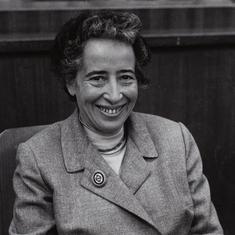As its title suggests, Vadhandhi – The Fable of Velonie is both about a character named Velonie and the lore about her. Velonie, the daughter of a single woman who runs a boarding lodge, is 18, pretty and friendly in her manner. Men can’t hold back from staring at her. Rumours about Velonie follow her not only during her short life but even after death.
Found face-up in a windmill farm in a part of Kanyakumari, Velonie (Sanjana) becomes the subject of a police investigation as well as a media trial. Unsavoury coverage of Velonie’s death prompts the police to supplement the inquiry with the Sherlockian inputs of sub-inspector Vivek (SJ Suryah).
Vivek, along with the help of Ramar (Vivek Prasanna), walks into a cesspool that bubbles away well into the final 30 minutes of the concluding episode. Velonie has a tense relationship with her mother Ruby (Laila). The list of suspects is populated by various men whom Velonie has met – the teenager who woos her, the writer who has stayed at the lodge, a trio of brothers living with their mother in a forest, and a few others who are kept out of view.
The Tamil-language Amazon Prime Video series has been created, written and directed by Andrew Louis. Set among the Anglo-Indian community in Kanyakumari and dealing with themes of sin, chastity, redemption and vengeance, Vadhandhi falls into the same exploitative trap that it claims to expose.

Louis initially brings curiosity and rigour to a routine missing-girl mystery. Streaming platforms are littered with chronicles of young women who die gruesome deaths because of sexual crimes. Grisly images of brutalisation come with a barely concealed moralistic message: this is what happens to women when they step out of their homes.
At least in its early episodes, Vadhandhi tries to subvert the genre requirements. Velonie’s infamy accompanies her to her grave. What a waste of beauty, a morgue worker callously remarks upon seeing her corpse.
Useful in both life and death, Velonie becomes a pawn for politicians and journalists (represented by Hareesh Peradi’s newspaper editor). The show wags its finger at the media’s role in fanning unsubstantiated gossip about female murder victims. As events prove, the characters in Vadhandhi are not very different in their fantasies about a free-spirited teenager.
The show uses a Rashomon-like device of presenting Velonie from the subjective viewpoints of the men who are describing her. Apart from bringing back Velonie through flashbacks, the device allows Andrew Louis to sensationalise her murder while claiming to demystify it.
What does it say about the supposedly sensitive Vivek that he dreams about the teenage Velonie? And do we really need extended depictions of sexual crimes?

There are other, more basic questions dogging Vivek’s obsessive quest for the truth, which, as is often the case, has been within reach the whole time. The holes in his investigation speak poorly of his abilities, and help only insofar as they drag out the show to eight overly long episodes.
The windmills keep pumping out hot air as Vivek squabbles with his understandably bewildered wife, leapfrogs from one suspect to the next, and runs maddeningly in circles. Is Velonie a slut, as some people claim she is, or a victim of perversity? The question leads a satisfyingly complex answer that is delivered too late.
SJ Suryah, radiating fitness and gravitas, makes an impressive streaming debut with Vadhandhi. Even after Vivek’s initial perspicacity has abandoned him, Suryah admirably communicates his character’s perseverance. Sanjana, as the frequently resurrected Velonie, Vivek Prasanna as Ramar, and Laila as Velonie’s distant mother, are equally good in a show that has a committed cast and promise that is only halfway fulfilled.










